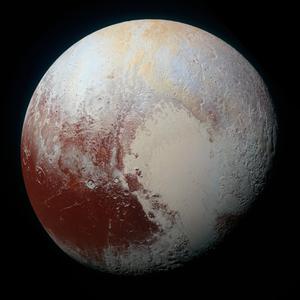Glossarbegriffe: Kuipergürtel
Description: Der Kuipergürtel ist eine ringförmige Region, die größtenteils jenseits der Umlaufbahn des Neptun liegt. Sie enthält vor allem kleine, eisige Objekte. Die meisten Objekte befinden sich einer Entfernung von 40-48 Astronomischen Einheiten von der Sonne.
Die Objekte im Kuipergürtel sind meistens klein, obwohl sich dort auch mehrere Zwergplaneten wie Pluto befinden. Im Gegensatz zu den kleinen Himmelskörpern und Zwergplaneten im Asteroidengürtel bestehen die Objekte im Kuipergürtel hauptsächlich aus gefrorenem Wasser, Methan und Ammoniak.
Zugehörige Glossarbegriffe:
See this term in other languages
Term and definition status: The original definition of this term in English have been approved by a research astronomer and a teacher The translation of this term and its definition is still awaiting approval
The OAE Multilingual Glossary is a project of the IAU Office of Astronomy for Education (OAE) in collaboration with the IAU Office of Astronomy Outreach (OAO). The terms and definitions were chosen, written and reviewed by a collective effort from the OAE, the OAE Centers and Nodes, the OAE National Astronomy Education Coordinators (NAECs) and other volunteers. You can find a full list of credits here. All glossary terms and their definitions are released under a Creative Commons CC BY-4.0 license and should be credited to "IAU OAE".
Zugehörige Medien
Pluto
Bildnachweis: NASA/Johns Hopkins University Applied Physics Laboratory/Southwest Research Institute credit link
License: PD Public Domain icons









